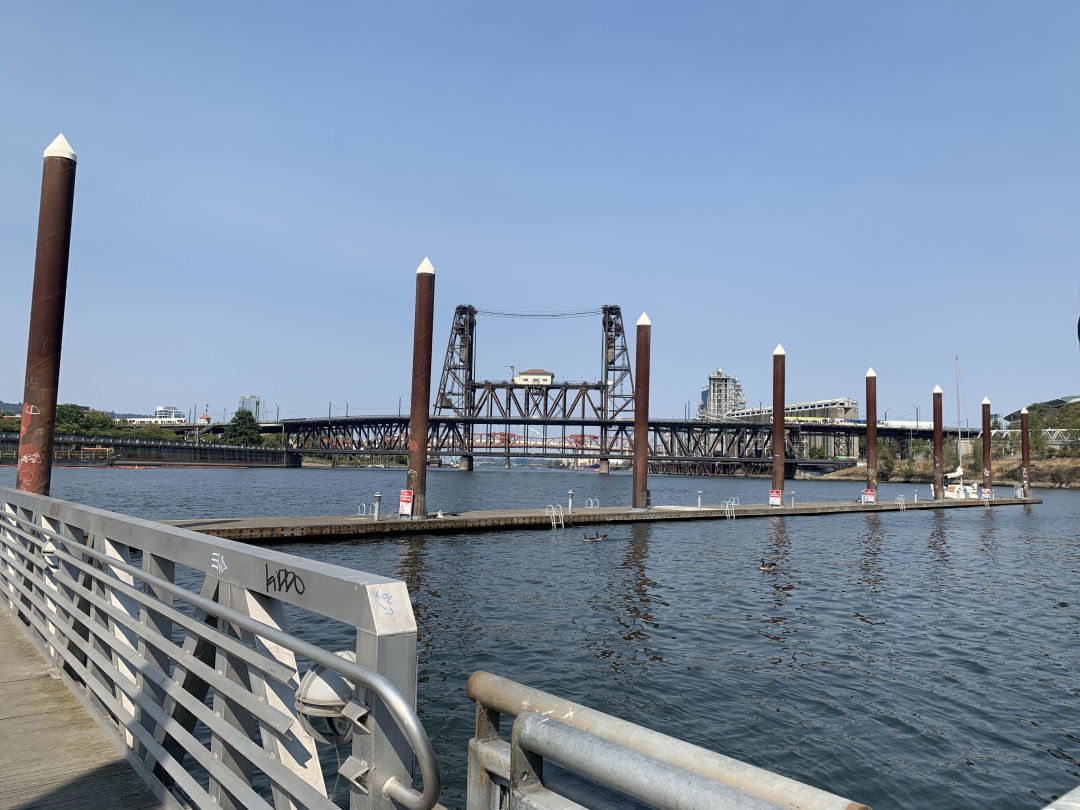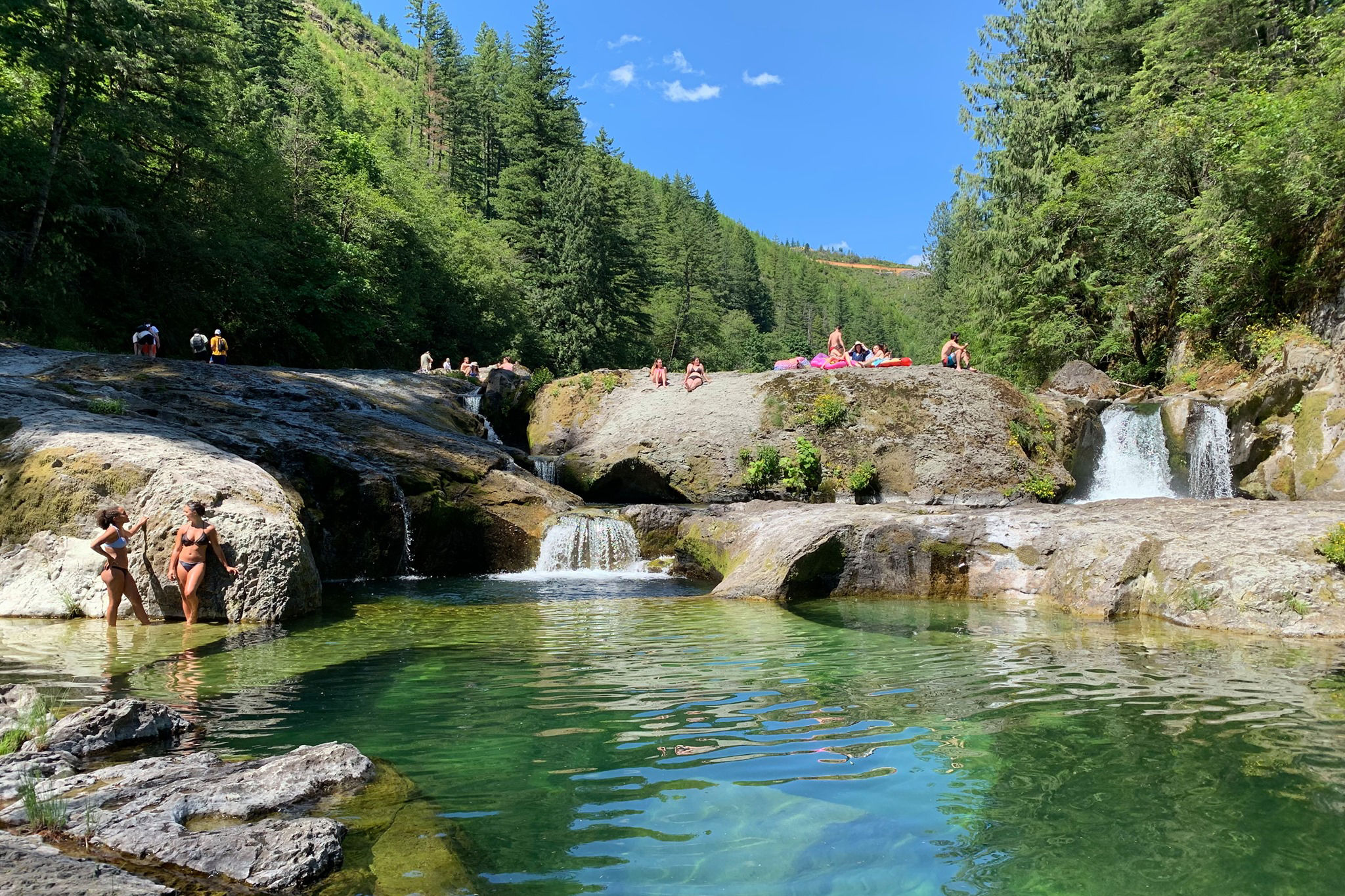Portland’s Newest Swimming Hole Is Ready for Your Diving Pleasure

The new Duckworth Dock is open for swimming.
Image: Morgan Westling
As if 2020 wasn’t bad enough, Portland pulled yet another short stick in September.
Wildfire smoke greyed out the last sunny days of calendar-year summer, robbing us of a proper goodbye.
But as fall begins, the forecast (and climate change) are giving us a treat this week with sunny skies and temps in the mid-80s. And Portland’s got a new(ish) swimming hole—the Duckworth Dock, between the Burnside and Steel bridges—for one last summer fling.
Social distancing won’t be an issue at the dock. With 300 feet to spread out, you can sunbathe, bring your Bluetooth speaker, and suck in this last bit of vitamin D before the October cloud cover comes for your soul. When you’re ready to test the water, the dock’s U-shape will protect you from the barges plowing past in the greater Willamette River. And there are eight ladders newly installed by the Human Access Project for your plunging, dipping, floating, flopping, and swimming pleasures.
Willie Levenson, the founder of the Human Access Project, calls the Duckworth Dock “an iconic, urban swimming hole” that’s easily accessible from every quadrant. Since it’s along the Eastbank Esplanade, you can bike, walk, scooter, unicycle, or skateboard to get there. There are parking lots and TriMet stops near both bridges.
The Duckworth Dock is one of many defined swimming spots along the Willamette river that the Human Access Project has successfully opened over the past decade. Others include Audrey McCall Beach, Poet’s Beach, and Fire House Dock. The need for greater swimming access grew from Levenson’s realization in the late ’90s that there was a stigma surrounding Portland’s central water source.
“Your skin will flake off or you’ll grow a horn . . .Everybody seemed to have some pocket joke about the Willamette River,” Levenson said. He investigated and found that the Willamette was, in fact, safe for swimming. Ever since the city completed the 20-year, $1.4 billion “Big Pipe” repair project in 2011, the river’s water quality is no longer questionable.
The opening of earlier swimming access points were small victories leading up to the nonprofit’s Duckworth Dock triumph. “It took six years of advocacy to get permission to add eight ladders and less than four hours to install them,” Levenson said.
Adding ladders to the Duckworth Dock was a hard-won battle, but Levenson hopes it will spark cultural change. Levenson says, “I want to live in a city that loves its river. I’ve always had faith in the power of the river, and slowly but surely Portland is getting it.”




